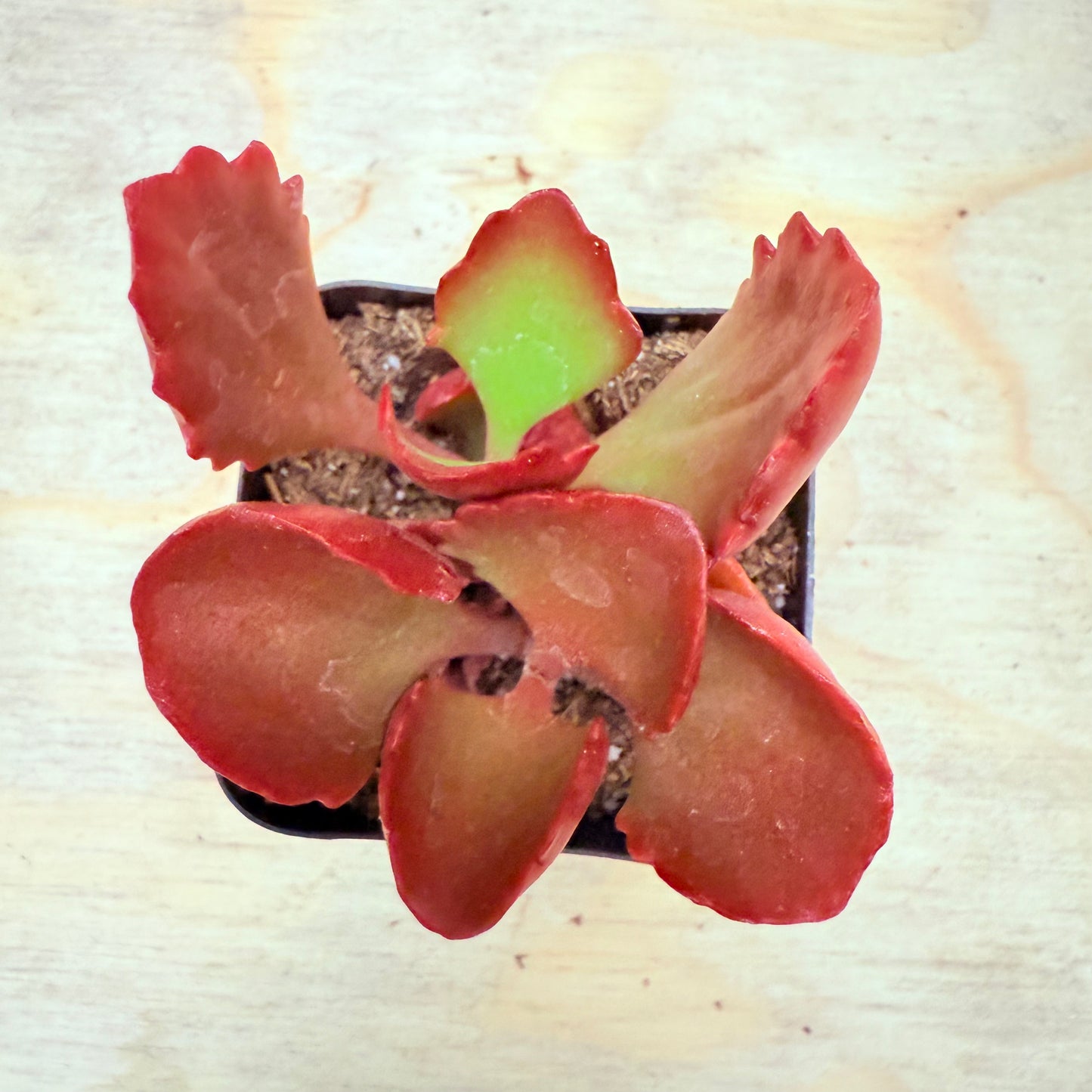Seah
Kalanchoe sexangularis - Red-Leaved Kalanchoe
Kalanchoe sexangularis - Red-Leaved Kalanchoe
In stock
Couldn't load pickup availability
Morphological Characteristics
Kalanchoe sexangularis, commonly known as the Red-Leaved Kalanchoe, is a bold, fast-growing succulent shrub native to southern Africa, notable for its striking bright red to burgundy foliage. It belongs to the Crassulaceae family and is prized for its colorful leaves, upright form, and ease of cultivation.
The plant features broad, fleshy leaves that are rounded to obovate with scalloped or irregular margins. When grown in strong light or cool temperatures, the leaf color intensifies to deep red or reddish-purple, while in shadier spots it may remain greenish with tinges of pink. Stems are square to six-angled (hence the name “sexangularis”), green to reddish, and grow upright.
Mature plants can reach 30–90 cm (12–36 inches) tall. In late winter to spring, it produces clusters of small, tubular, yellow-green to pale yellow flowers on tall, branched inflorescences rising above the foliage.
Growth Habits
Kalanchoe sexangularis is a fast-growing, upright subshrub. It typically grows as a single-stemmed plant but branches from the base when pruned. With time, it can form loose thickets. In warm climates, it can be used as a perennial bedding plant, or grown in containers in cooler areas.
Maintenance Points
-
Lighting: Prefers bright light to full sun. Full sun enhances red coloration. Indoors, place near a south-facing window or use grow lights.
-
Watering: Water when the soil is completely dry. Reduce watering in winter. Avoid water on leaves to prevent rot.
-
Soil: Requires well-draining soil, such as cactus/succulent mix amended with perlite or pumice.
-
Temperature: Best in 18–29°C (65–85°F). Not frost-tolerant. Bring indoors if temperatures drop below 5°C (41°F).
-
Fertilization: Apply diluted balanced fertilizer monthly during growing season (spring/summer). No fertilizer needed in winter.
-
Potting: Use containers with drainage holes. Repot every 2–3 years or if root-bound.
-
Humidity: Prefers dry environments. Ensure good airflow to prevent mildew or fungal issues.
Reproduction Method
Stem Cuttings:
-
Cut 10–15 cm (4–6 inch) healthy stems with 2–3 nodes.
-
Let cuttings callus for 2–3 days, then plant in dry, well-draining soil.
-
Mist lightly until rooted (1–2 weeks).
Offsets / Basal Shoots:
-
Separate basal shoots with roots attached.
-
Replant in a new container with dry soil.
Seeds (Less common):
-
Collect seeds from dried flower heads.
-
Sow in fine cactus soil; keep warm and lightly moist until germination.
Additional Tips
-
Pest Control: Watch for aphids, mealybugs, and scale insects. Use neem oil or insecticidal soap if needed.
-
Disease Prevention: Avoid overwatering and provide good airflow. Remove dead leaves regularly.
-
Pruning: Trim leggy stems to promote bushier growth. Deadhead spent flowers.
-
Display: Excellent for color contrast in succulent arrangements, borders, or containers. Works well with pale or blue-toned succulents.
-
Safety Note: Toxic to pets if ingested. Keep out of reach of cats and dogs.




